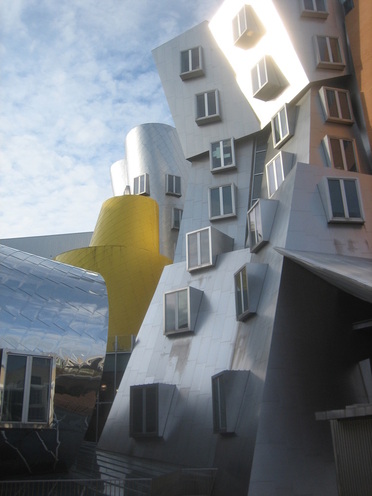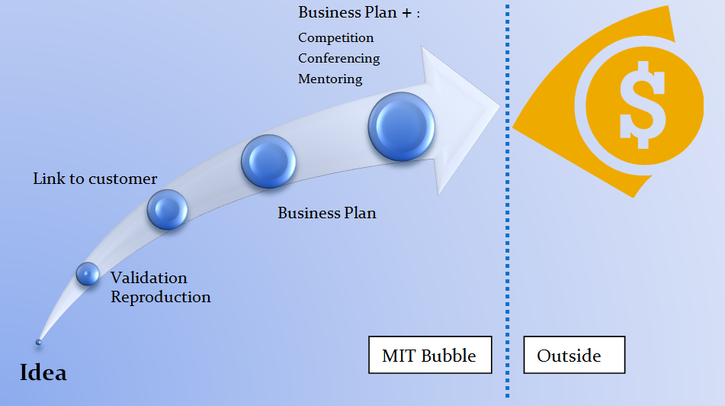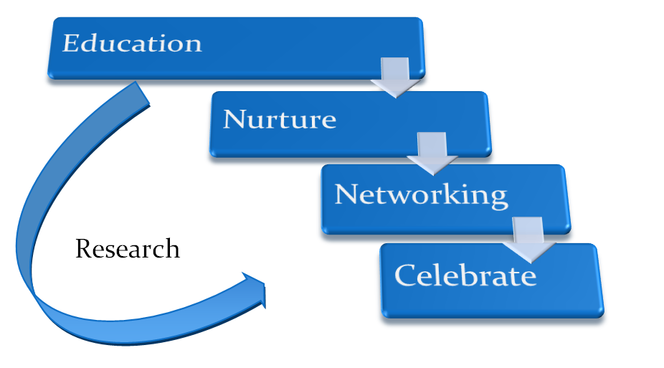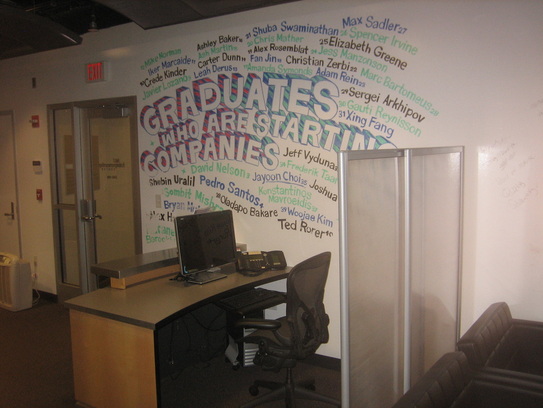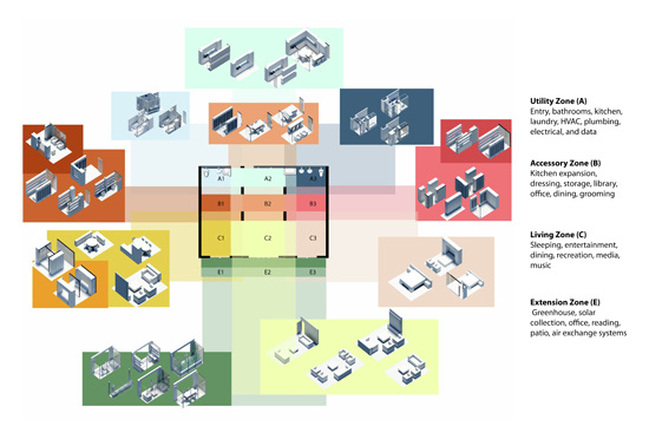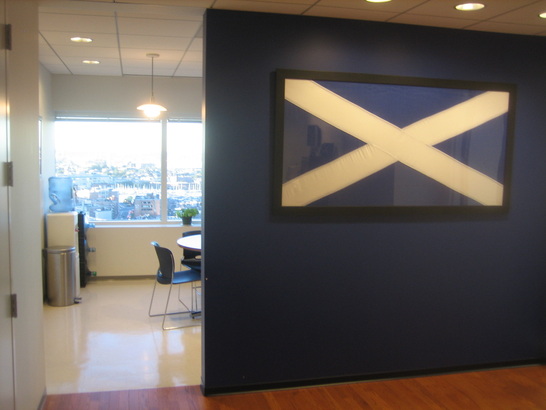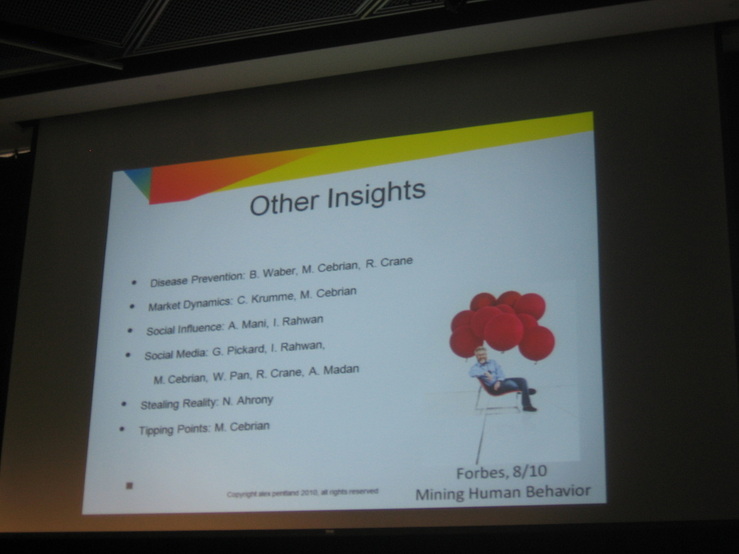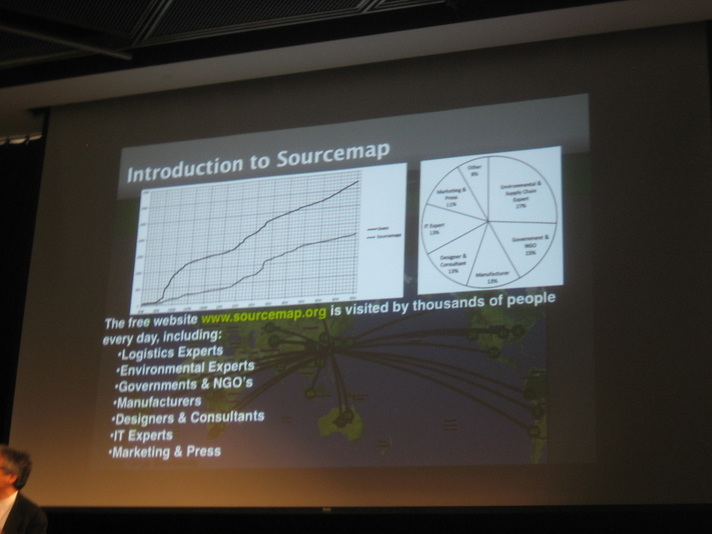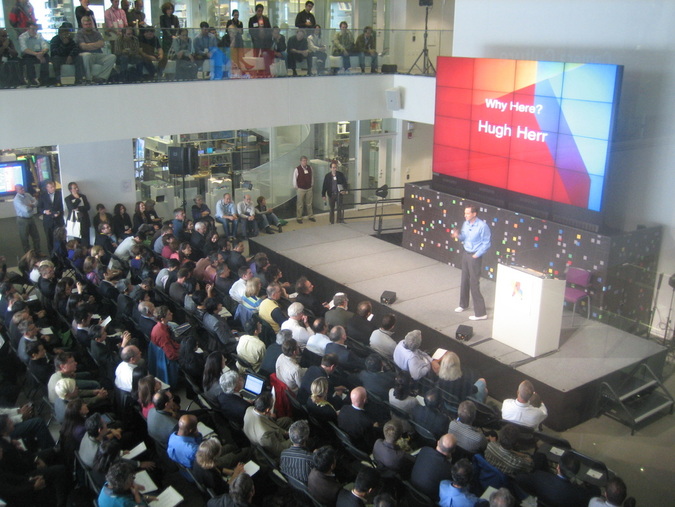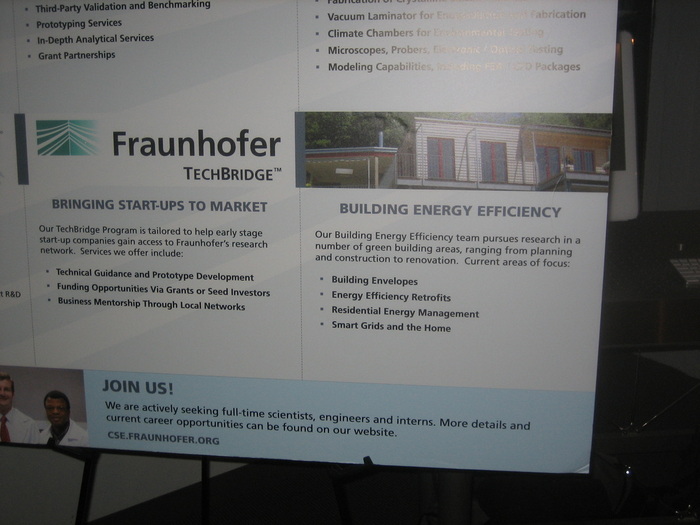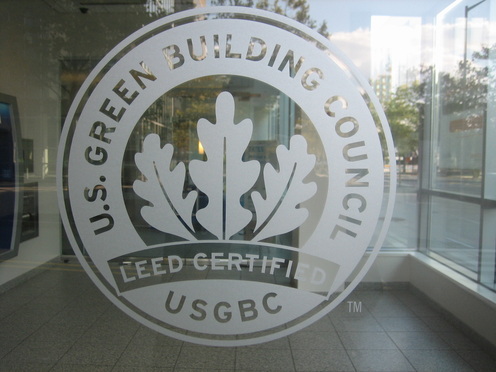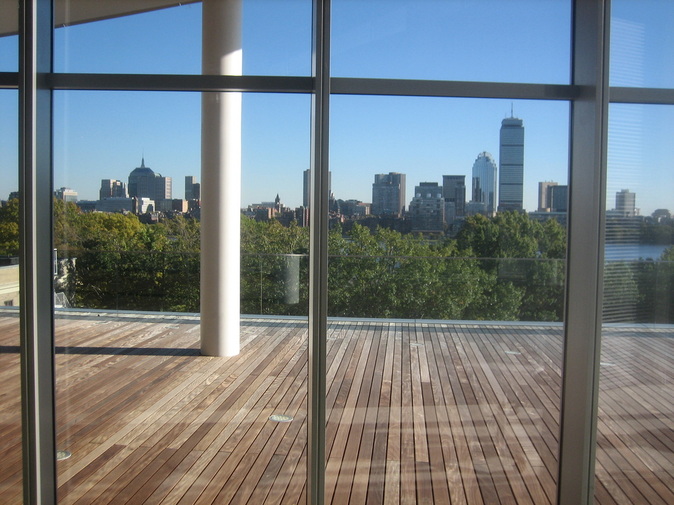MIT Media Lab Visit, 12-17th October 2010
The Massachusetts Institute of Technology is one of the top research centres in the world. Located in the city of Cambridge, this University offers a wide range of technological courses all around its campus.
One of the newest departments is the Media Lab. This unconstrained space is carrying out more than 350 projects that range from neuroengineering, to new children learning didactic, electric cars and new 3D holograms.
The MIT Media Lab is formed by 35 faculty members, 60 research affiliates, 74 PhD students and 65 Master students. The lab is supported by around 60 sponsors all around the globe and they provide almost the entire $25 million annual budget.
As part of the Highlands and Islands Enterprise (HIE) team, sponsor of the MIT Media Lab, I had the pleasure of closely discovering the lab and other MIT departments.
One of the newest departments is the Media Lab. This unconstrained space is carrying out more than 350 projects that range from neuroengineering, to new children learning didactic, electric cars and new 3D holograms.
The MIT Media Lab is formed by 35 faculty members, 60 research affiliates, 74 PhD students and 65 Master students. The lab is supported by around 60 sponsors all around the globe and they provide almost the entire $25 million annual budget.
As part of the Highlands and Islands Enterprise (HIE) team, sponsor of the MIT Media Lab, I had the pleasure of closely discovering the lab and other MIT departments.
12th October
After spending three days in London, due to the UK PassivHaus conference, I met the rest of the HIE’s awarded members at Heathrow airport. The comfortable and pleasant flight to Boston took seven hours.
Once we had left the baggage in the hotel, we walked across the MIT complex. Since the very first moment a ray of technology and 'geek atmosphere' utterly involved us. It is also worth mentioning the astonish Frank Gehry’s Stata Center building:
Once we had left the baggage in the hotel, we walked across the MIT complex. Since the very first moment a ray of technology and 'geek atmosphere' utterly involved us. It is also worth mentioning the astonish Frank Gehry’s Stata Center building:
13th October
At the lobby of the hotel we met with John Mackenzie and Laura Dingwall, development managers from HIE, and we headed the MIT Entrepreneur Center to discuss the personal agendas. Unfortunately, the couple of meetings that I had expected were not possible due to schedule issues. Nevertheless, these contacts have expressed wish to answer any question through e-mail.
On the next arranged visit to the MIT Sloan School of Management, we had the pleasure to chat with Bill Aulet. Bill is the Managing Director of the Entrepreneur Centre and also a senior lecturer at the Sloan School (link to his blog). During our short visit to the Sloan Centre, we were delighted by the research methodology followed such as open door thinking, ideas and notes on the walls, relaxed group meetings or open ideas reviews.
Bill gave an intense speech about how ideas can become successful businesses at the Sloan School. The centre’s goal is to provide MIT students the capability and tools to create companies. The process is briefly described in this Figure:
On the next arranged visit to the MIT Sloan School of Management, we had the pleasure to chat with Bill Aulet. Bill is the Managing Director of the Entrepreneur Centre and also a senior lecturer at the Sloan School (link to his blog). During our short visit to the Sloan Centre, we were delighted by the research methodology followed such as open door thinking, ideas and notes on the walls, relaxed group meetings or open ideas reviews.
Bill gave an intense speech about how ideas can become successful businesses at the Sloan School. The centre’s goal is to provide MIT students the capability and tools to create companies. The process is briefly described in this Figure:
Working parallel with this structure, the Sloan School of Management also encourage students to follow this sequence:
After attending Bill’s lecture, he was asking questions to each of us about our roles within our respective organisations. Bill showed interest about the PassiveWall™ project and the importance of energy in the current global context. He mentioned about production disruptions due to the scale of energy nowadays (i.e. Russia). Bill also highlighted the connectivity and transport issues within the Highlands region and he asked me about how the company are aware of competitors in the construction sector. Finally, Bill pointed out that 80% of the traffic for MIT School of Business Website is by video.
The Sloan Business School has launched a new program called the Clean Energy Ventures (CEV) in order to innovate in clean energy.
After a very productive two hours in the Sloan Center, the next stop was the Media Lab. I was very interested about mass customisation because it will be an important part of my research. Prof. Kent Larsson was lecturing a workshop about this topic. The slogan of the session does not need further explanation, ‘Unit to Me’. I grabbed quite a few great ideas about this concept, such as maximise the use of standard modules in the design, postpone differentiation until the latest possible, or work first in the product architecture. The company Scania successfully implemented this principle in his manufacturing process.
The second part of this workshop was given by Ryan Chin and Daniel Smithwick. Ryan Chin’s speech was about electric based vehicles for Smart Cities as cars, motorbikes or bikes. Nevertheless, Mr Chin enounced the benefits of mass customisation in terms of distribution, product nesting and ratio of returns. He also talked about the concept of green customisation and the real impact of mass customisation in the environment (after the Sander’s Report, 2005). Mass customisation has been defined as the ultimate lean manufacturing system. Mr Smithwick presented his research about homes’ layout customisation.
The main project is called ‘Home genome’where its goal is to establish a user-friendly online apartment design configurator. The methodology is based in an algorithm that analysis a big amount of data related to home activities introduced by potential users. The system established a series of ranked models according to other similar users’ information.
The main project is called ‘Home genome’where its goal is to establish a user-friendly online apartment design configurator. The methodology is based in an algorithm that analysis a big amount of data related to home activities introduced by potential users. The system established a series of ranked models according to other similar users’ information.
This methodology can be very useful in order to define an ideal modular panel or section that, by modular repetition, could be the 90% of the pattern design for most of the houses. Daniel remarked that too much choice derives a bunch of data hard to process. The MIT Open Source Building Alliance (OSBA) is working in the mass customisation of buildings (OSBA White paper).
After this workshop, I had a wee look to different project around the Media Lab before we visited the Scottish Development International (SDI) office in Boston.
The SDI presents 21 offices around the world in order to support Scottish companies. SDI mission is to act as company’s incubator. SDI offers services as market research, support for exhibitors, for learning or educational trips, networking, etc. SDI also offers room for meeting at a very affordable rate. Finally, SDI can provide information and contact about attorneys or international trading.
After this workshop, I had a wee look to different project around the Media Lab before we visited the Scottish Development International (SDI) office in Boston.
The SDI presents 21 offices around the world in order to support Scottish companies. SDI mission is to act as company’s incubator. SDI offers services as market research, support for exhibitors, for learning or educational trips, networking, etc. SDI also offers room for meeting at a very affordable rate. Finally, SDI can provide information and contact about attorneys or international trading.
14th October
Thursday and Friday were the busy days at MIT Media Lab. Apart from being the Sponsors’ week; the Media Lab celebrated its 25th anniversary. I assisted to most of the conferences and seminars where the Media Lab projects were presented. Responsive Environments by Joe Paradiso introduced the SourceMap project and Changing Places presented by Kent Larsson showed the research about the workshop I attended the day before. Although these two were the only presentations directly related to my research, other presentations were, at least, very inspirational. Hiroshi Ishii, from Tangible Media talked about Information Ecology: How different applications such as Facebook, Dropbox or Twitter are changing the information chain of distribution. Mr Ishii pointed out how too many data equals to no data.
During the breaks, I was walking around the Media Lab searching for any information or technology whereas it was minimally applicable to the PassiveWall™ project. Certainly, the manufacturing and designing process was the most inspirational influence. I had a valuable chat with Daniel Smithwick about Mass-customisation and how it could be of very interest to carry out a research about modularising the structure of a house with a similar algorithm approach used by Daniel. I will be in contact with Daniel in order to establish a possible cooperation. Other Media Lab projects not related with buildings were robotics, music, biosciences, or gaming.
15th October
On Friday I attended the morning session's conferences. After the morning coffee break, I had a personal chat with Leonardo Bonani, responsible of SourceMap. This is a on-line application where you can calculate the carbon footprint and global Warming Potential (GWP) of different products. The data base is still small, but the tool is reliable and the data is constantly reviewed by the MIT SourceMap team. This tool can be used to trace the products needed to fabricate the PassiveWall™ and show the benefits of RTC products respect other competitors. Leonardo will be in Scotland next year so It would be interesting to be in touch in order to establish a cooperation between MIT SourceMap and RTC to determine the carbon footprint.
Just before the lunch break, I assisted to one of the most stunning presentations of the whole Media Lab event. It was given by Hugh Herr. He personally showed to everybody how technology can overcome human disabilities. Hugh has developed a Biomechatronic legs which perform almost as a natural ones. His performance on the stage was just impressive.
After lunch I was able to visit one experimental physics lab at the MIT. One of the research that was carried out involved new material for insulation of cables. Several staff members showed me typical lab tests done by undergraduate students.
Friday night was the MIT Energy night showcased by the MIT Energy Club. Campbell from AES Solar Energy and myself we had an intense time at the MIT museum. Although it was not any research presentation about efficiency of building fabrics, the information achieved about solar thermal energy and the proper visit to the MIT Museum was worthwhile.
16th and 17th October
I spent Saturday morning by looking around the MIT complex. I took notes about new solar energy research for thermal heating applications which could be applied in synergy with PassiveWall™ roof cassettes. I also walked into the Architecture department and have a wee chat with one of the staff members about the new market trend about low energy buildings. In the US, LEED is the tool to rate the energy efficiency of buildings.
The Saturday evening and Sunday morning was free time and I dedicated it to explore the City of Boston. I visited Harvard, the Charles River Basins, Boston public gardens, and the coastal neighbourhood of Marblehead.
As summary of this week, I can define the MIT Media Lab in two sentences:
- Factory of ideas
- Inspirational atmosphere in every corner.
- Factory of ideas
- Inspirational atmosphere in every corner.
My only critical point of view about the Media Lab regards that this Centre can work the way he does due to its numerous sponsors who provide almost the entire budget for the Lab. There is not (at least no published) the ratio of successful projects and the average project time. This educational-technological centre would not be the same if they were researching under tight deadlines and budget constraints (as all of the Scottish institutes are).
Finally, this video shows my summary about this unforgettable week.
Comments here.
© 2010 Jesus Menendez. KTP Associate - Edinburgh Napier University and RTC Timber Systems Ltd.
You must not republish material from this website (including republication on another website), or reproduce or store material from this website in any public or private electronic retrieval system. (Though I encourage fair use for academic / non commercial purposes)
